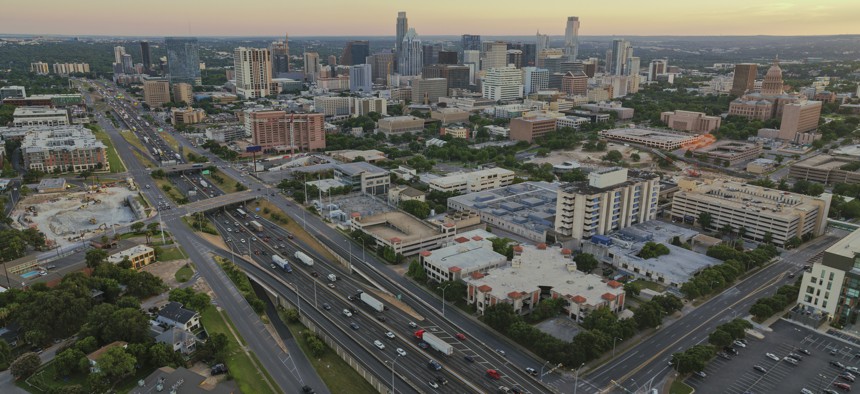Fast-Growing Cities and States Experience Growing Pains

Austin, Texas, is one of the fastest growing cities in America. simonkr via Getty Images
Finding enough affordable housing and providing services are two of the top challenges that come with rising population growth.
Austin, Texas, is one of the fastest growing cities in America, but its former mayor recalls that the question everyone asked him, in all quarters of the city, was what could be done to stop the growth. Unfortunately, former Mayor Steve Adler answered, the only way to do that is for a city to become an “undesirable place to live. You don’t want that.”
Speaking in a discussion about managing growth in America’s fastest-growing cities, counties and states, co-sponsored by the Volcker Alliance and the Penn Institute for Urban Research, Adler and his colleagues from other growth spots talked about the challenges that come with sustained population increases.
Providing affordable housing and creating transportation options for workers who live far from their jobs was named as a top challenge for officials representing Austin, Dallas County and the Metropolitan Atlanta region.
“Young people have to live far from Metropolitan Atlanta to find places to live,” said Anna Roach, chief executive officer and executive director of the Atlanta Regional Council. “We’re not building enough housing to keep up with growth and that’s exacerbating affordability. There are similar challenges in the rental market.”
Adler said that as housing prices rise, it leads to increases in homelessness, gentrification and displacement of residents. One solution, he said, is to build more densely and to build taller buildings. “But people are trying to protect their neighborhoods’ character,” he said, so they resist efforts to change zoning regulations to accommodate taller buildings that are closer together.
There is a similar tension in the regions right outside fast-growing cities where residents don’t want to lose farmland or land for wind farms to make room for affordable housing developments, said Matt. Chase, chief executive officer and executive director of the National Association of Counties. “These are real conflicts.”
Tax law also seems to be encouraging private equity firms to scoop up houses when they come on the market, Chase said, and that’s driving up prices. Private homeowners can only deduct $10,000 for their mortgages on their federal taxes, he noted, but equity firms can deduct the full value.
Creating affordable housing is a stubborn problem, but officials said it is just one of the challenges that come with explosive growth. Other issues that demand a lot of time and money include building new schools or expanding the capacity of existing schools and hiring enough teachers, police and firefighters.
In fast-growing Idaho, state budget director Alex Adams said the state has had to raise teachers’ salaries from a level near the bottom of the nation in order to entice teachers not to look for jobs in neighboring states. The goal, he said, is for teachers’ salaries to ultimately be in the top 10% in the nation.
And with all this comes other ancillary issues that are just as pressing. In Dallas County, the prisons are filled to capacity and there aren’t enough mental health services for those prisoners and for others who need it, said Darryl Martin, county administrator for Dallas County. “So this is a crisis.”
And keeping up the condition of infrastructure is hard when populations rise. Officials said increased building moves more rainwater to the pipes and dealing with runoff is expensive. Adams said Idaho is also directing a lot of resources to bridges and roads.
“We see a greater move to urban populations,” Adler, the former mayor of Austin, said. “The cities are both benefiting from that and being challenged by it.”





